Best Life Jackets and Personal Flotation Devices (PFD) of 2024
Adjustable coast guard rated life jackets and PFDs for comfort and safety in flatwater and white water
Updated April 12th, 2024
We researched the best life jackets and personal flotation devices (PFDs) available by reading hundreds of consumer and professional reviews and narrowed the dozens of options to test the unique gear requirements of different water sports.
Whether you’re kayaking, canoeing, fishing, swimming, packrafting, or whitewater rafting, the one thing that all boaters can agree on (gear-wise, at least) is that personal safety is paramount. No piece of equipment is more important to your safety on the water than a PFD.
I’m a rafting guide who manages daily operations for an Alaskan river company. I formerly led our rafting program based out of Skagway, Alaska, and guided the rivers surrounding Southeast Alaska, British Columbia, and the Yukon—taking everyone from Boy Scouts who had never rowed to well-seasoned water enthusiasts on the river.
Looking for PFDs for smaller bodies? See our Best Kids’ PFD and Life Jackets guide.
Remember, no piece of gear—no matter how highly rated— can save you in all life threatening situations on the water. You are responsible for your own safety. Take a course on boat safety before heading out!
We create reader-supported, objective gear reviews independently selected by our editors. This story may contain affiliate links, which help fund our website. When you click on the links to purchase gear, we may get a commission — without costing you an extra cent. Thank you for supporting our work and mission of outdoor coverage for every body! Learn more.
Life jacket and pfd comparison chart
| PFD | TREELINE AWARD | US COAST GUARD RATING | DESIGN FLOTATION (lbs) | SIZES | WEIGHT (lbs) | # OF POCKETS | # OF ADJUSTABLE STRAPS |
|---|---|---|---|---|---|---|---|
| NRS Vapor | Best Overall Read why |
III | 16.5 | S-XXL | 1.85 | 0 | 6 (2 side, 2 shoulder, 2 waist) |
| Astral BlueJacket | Best Upgrade Read why |
III | 16.4 | S/M, M/L, L/XL | 2.00 | 3 + hydration sleeve | 8 (4 side, 2 front, 2 waist) |
| Stohlquist Fisherman | Best PFD for Fishing Read why |
III | 16.3 | XS/M, L/XL, XL/XXL | 2.30 | 7 | 8 (2 shoulder, 2 chest, 4 side) |
| Astral GreenJacket | Best PFD for Rescue Read why |
V | 16.5 | S/M, M/L, L/XL | 2.90 | 3 (1 big front, 2 back side) | 9 (6 side, 2 chest, 1 safety belt) |
| Astral Layla | Best PFD for Women Read why |
III | 16.3 | S-XL | 1.76 | 1 (front pocket) | 6 (4 side, 2 shoulder) |
Interested in water sports? Check out our most popular water gear guides:
The author wearing the NRS Vapor on the Tsirku River in Alaska. Photo courtesy Aaron Henry.
The Best Life Jackets and PFDs
Best Personal Flotation Device for Most People: NRS VAPOR
US Coast Guard Rating: III
Design Flotation (pounds): 16.5 lbs
Sizes: S-XXL
Weight: 1.85 lbs
Pockets: 0
Adjustable Straps: 6 (2 side, 2 shoulder, 2 waist)
Best for: jack-of-all trades whitewater and flatwater activities
What we liked: low-profile, range of sizes, versatility for whitewater and flat water, value for the price,
What we didn’t like: back panel makes less comfortable to sit in higher-backed seats
We chose the NRS Vapor as the Best All-Around PFD based on its low-profile design, range of sizes, and affordable price. This made the NRS Vapor our jack-of-all-trades PFD.
As a Type III PFD, the Vapor is rated for both whitewater and flatwater. While, once again, not a “lifesaving” device, as a personal flotation device, it has more than enough buoyancy to keep a conscious swimmer’s head above water in a variety of circumstances.
The low profile is great for a whole host of activities, from kayaking to canoeing to rafting — this PFD proved its worth. I bought this PFD 7 years ago when I began my rafting career, and have used the NRS Vapor in all three of these activities. There was no need to purchase a separate rafting, canoeing, or kayaking PFD. The NRS Vapor can do it all.
Compare prices of the NRS Vapor
Wide arm holes on the NRS Vapor provide ventilation and excellent range of motion.
Fit and sizing
While the NRS Vapor’s back panel does make it more difficult to sit comfortably in higher-backed seats (as in some kayaks), it’s all about the fit. If the PFD is sized and adjusted correctly to fit close to the chest, then issues with it “riding up” in a high-backed should be resolved.
With two waist straps on either side and adjustable shoulder straps, fitting this PFD to a wide range of body types is simpler than on other PFDs. I also have a large chest and found that the NRS Vapor is one of the few non-women-specific PFDs that fits well. Wide armholes on the NRS Vapor provide ventilation and an excellent range of motion for all activities. We’ve used it in large rafts, personal inflatable kayaks, folding kayaks, and Inflatable Stand Up Paddle Boards (SUPs).
One of our favorite features of the previous model is the lash tab placed up and to the side on the NRS Vapor. Unfortunately, that has been discontinued in the most recent model. Photo courtesy Aaron Henry.
Updates to the newest model
We do have a few pitfalls on this newest model that we need to address. In previous models, the NRS Vapor had an extra-large front pocket that was great for storing everything from snacks to medical kits. Unfortunately, this newest model is pocketless. (Fully pocketless. Not even a fleece-lined hand-warming pocket left for those chilly shoulder-season paddles.)
NRS has also removed the lash tab attachment for emergency river knives, a feature we really liked in the previous version. But it kept costs down, so we guess that’s a plus. If the pocket is a deal-breaker for you, we suggest looking at the NRS Ion or NRS Siren. For $20 more, you can get extra foam (which is bulkier but nicer if you want more buoyancy) and a pocket again.
The newest model of the NRS Vapor weighs 1.85 pounds, compared to the 2.3 pounds of the previous model. They may have shaved off half of a pound, but we would like the pockets back!
Value
The best thing about the NRS Vapor PFD is that it is priced at the affordable end for a Type III PFD. It's worth noting that Type III PFDs almost always will cost you more than Type II PFDs because of the materials and features that allow you to do more activities while wearing it. We think the NRS Vapor PFD is worth the price simply because it can span the test of activities—from canoeing on the lake to swimming a Class III rapid to fishing for brook trout. And it comes in a range of sizes from S-XXL.
Alternatives
If you’re looking for something more comfortable than the NRS Vapor, we’ve found the Astral BlueJacket to be the most comfortable, versatile PFD we tested. It’s our Upgrade Pick because it costs more, but we think if you plan to be spending 5 or more hours for multiple days in your PFD, it’s a worthy upgrade.
While we think the NRS Vapor will serve in almost all watersport activities, if you’re a paddler that spends the majority of the time in a high-backed seat (common for sit-on-top kayaks and canoe modular seats), you will be better served by a high-back PFD like Our Winner for Fishing.
Reviews for the nrs vapor
The NRS Vapor is one of the best-rated PFDs by both outdoor media and customer reviews. It earned these ratings: Moosejaw (4.8/5), Backcountry (4.5/5), Amazon (4.5/5), NRS (4.0/5), Trailspace (4/5), OutdoorPlay (5/5), Kayak Guru (#4/9), Paddling.com (4.7/5), REI (4/5).
With the Vapor performing versatility for a wide range of customers, we were able to pull reviews from multiple sources. Paddling Magazine praised the “performance touring-inspired features at an entry-level price.” Kayak Guru praised its lightweight and durability. Amazon users employed the Vapor for a wide range of activities and declared it perfect for everything from dragon boat racing to flatwater kayaking.
In addition, NRS users were impressed by its comfort, the extra-large front pocket, the easy ability to put on and take off, and the side buckles, which didn’t interfere with getting into and out of boats. Lastly, Walmart commenters were looking for a quality, versatile PFD at a reasonable price and were more than satisfied with the Vapor.
Aaron Henry in the Astral GreenJacket PFD on the Klehini River in Haines, Alaska.
Best type V PFD for rescue: Astral greenjacket
US Coast Guard Rating: V
Design Flotation (pounds): 16.5 lbs
Sizes: S/M, M/L, L/XL
Weight: 2.9 lbs
Pockets: 3 (1 big front, 2 back side)
Adjustable Straps: 9 (6 side, 2 chest, 1 safety belt)
Best for: whitewater, rescue, guides, search and rescue
What we liked: rescue features, comfort, durability, accessible front pocket, eco-friendly materials, lifetime guarantee
What we didn’t like: price
We chose the Astral GreenJacket as the Best Rescue Personal flotation device among its competitors because of the consistently positive consumer feedback and outdoor media reviews. (Plus, our kayak-junkie friends can’t stop raving about it.) No other PFD was more highly praised (ever since its release in 2008) for its rescue features, comfortable design, durability, and earth-friendly materials.
As a Type V PFD, the GreenJacket is designed with specific water-rescue intentions. What Type V PFDs have that others lack is a means of belay, and escape from that belay if necessary.
A rope can be attached to the rescue ring as a belay for a rescue swimmer, but should the rope become an entanglement or caught on life-threatening debris, the swimmer only needs to pull the front release tab to unclasp the harness belt, which allows the rescue ring (and it’s attachment) to slip off, freeing the swimmer.
Compare prices of the Astral Greenjacket
With 16.5 pounds of flotation weight, the bulkier Astral GreenJacket PFD is made for whitewater paddlers swimming through big water. Photo courtesy Aaron Henry.
Features
The Astral GreenJacket comes with:
a quick-release harness belt and rescue ring, which is also able to attach a tow-rope for kayakers
reflective accents for extra visibility
a clamshell front pocket with multiple compartments and storage pockets, which can also be used as an on-the-go workbench
Design and Flotation
For those who are on the water for more days than they can count, this PFD is worth both the extra bulk and the price. It's bulkier than other PFDs, but that's for a reason. With 16.5 lbs of flotation weight, this PFD is made for whitewater paddlers swimming through big water.
While keeping you afloat, the Astral GreenJacket’s design allows for big arm movements (think aggressive swimming or whitewater paddling) and comfort (bulky doesn’t equal constrictive) while you’re paddling through Class V rapids. The monetary upgrade is worth it when you consider the return on your investment: Astral has a lifetime guarantee on its products, so if it fails, it’s replaced!
Adjustability
With an overhead entry, the Astral GreenJacket can be considered more cumbersome to put on/take off than other PFDs but has a generous amount of adjustability on the waist and chest. Take note, however, that this PFD does not have adjustable shoulder straps. Instead, Astral used a “techtonics” design to provide a “two-panel fit system designed to eliminate ride-up and provide maximum mobility.” The adjustable panels allow you to custom-fit the height of the panels, which is more effective in sizing than just adjusting shoulder straps.
Materials
As a bonus, the GreenJacket is made with PVC-free, non-toxic Gaia foam and as much recycled material as Astral can get its hands on. And it has a fleece-lined hand-warming pocket, great for early- and late-season paddling adventures.
Pockets
The easily accessible clamshell pocket is also great for storing things like a waterproof camera or action camera, or phone (properly stored in a waterproof case). On the water, it is all too easy to forget to take photos and having secure storage for a camera can make a difference.
The Astral GreenJacket PFD is designed to provide maximum mobility. Photo courtesy Nicole Kalata in the Florida Everglades.
Fit and sizing
There were only a few downsides to this PFD, but they are worth mentioning: Besides being bulky, we came across numerous complaints that this PFD was not comfortable for people with large chests due to the round, prominent front panel. That being said, we also found numerous reviews from women saying that they’d forsake women-specific PFDs in favor of the GreenJacket. We’d call that a dealer’s choice.
Rescue Knife attachment
The rescue knife attachment point is on the front of the clamshell pocket and is easy to catch when rowing, paddling, or on a low-hanging tree branch (watch out for those!). This can be averted by reconfiguring your knife to attach to your shoulder strap, but it’s not intuitive.
Value
We recommend investing in the Astral GreenJacket if you’re certain you want a rescue-style PFD or are ready to hit Class III+. The biggest concern with this PFD is the price and we think if you're a dedicated paddler, it is worth it.
We interviewed Nicole Kalata, a raft guide shown in the photo of the GreenJacket below, “When I was in Colombia, one of my guides fell in love with it (and they can’t [buy] the Greenjacket down there). So I left it with him. :) He was super stoked. He had a crappy PFD and is the best white water kayaker I have even seen at 19... I knew it would be in good hands.”
Chad Culler, the author’s paddle-happy roommate, whitewater aficionado, and former sea kayak guide, upgraded from the Sea Wolf (Astral’s Bluejacket predecessor) to the Greenjacket this year and will never go back. After a 6-day paddle fest down the Main Fork of the Salmon River, the man-of-few-words said he was glad he bought this year’s color but kicked himself for not switching to a Greenjacket before this year. “The one time I swam, I was immediately buoyed back up—and I’m a big, tall guy who was caught in some gnarly hydraulics. I’m hooked.”
The Astral GreenJacket has a generous amount of adjustability in the waist and chest. Photo courtesy Keenan Sullivan on the Upper Tsirku River in Haines, Alaska .
REVIEWS FOR THE ASTRAL GREENJACKET
The Astral GreenJacket earned these ratings from outdoor media and users: Backcountry.com (4.5/5) , Amazon (4.7/5), Astral (5/5), Coloradokayak (5/5), Mtnweekly (4.5/5), Astral Customers (5/5), Mountain Weekly News (4.5/5), Paddling.com (4/5), Next Adventure (Thumbs Up), Blister Review (Thumbs Up), Rafting Magazine (Thumbs Up).
Mountain Weekly News was impressed by the quality of the quick-release rescue harness (especially its 1,200-lb rating!). They called it the best PFD on the market regarding whitewater and even argued it’s the best for everything else. We’ve had CKS Blog call the Greenjacket low-profile without sacrificing storage, safety, or protection.
One reviewer said, “I will never buy a different PFD until Astral comes out with one even better” (Nick Wigston). In addition, Astral reviewers raved over this PFD for “the durability, effectiveness, and great design features incorporated into the products,” from swimming every rapid of the Colorado River in the Grand Canyon to sailboat racing near Chesapeake Bay.
Amazon reviewers were a bit thrown by the price but agreed it was worth it. Many reviewers were incredulous that anyone would buy another PFD for whitewater activities. One of the biggest gripes was the overhead entry, but those who used it found the hassle worth it.
Interested in water sports? Check out our most popular water gear guides:
The author wearing the BlueJacket on the Arkansas River.
Best Upgrade PFD: Astral BlueJacket
US Coast Guard Rating: III
Design Flotation (pounds): 16.4 lbs
Sizes: S/M, M/L, L/XL
Weight: 2.0 lbs
Pockets: 3 + hydration sleeve
Adjustable Straps: 8 (4 side, 2 front, 2 waist)
Best for: versatility, whitewater and flatwater
What we liked: comfort, accessible front pocket, value for the price, lightweight, hydration bladder compatible
What we didn’t like: lack of adjustable shoulders (for shorter people)
If you’re looking for a versatile life jacket for whitewater sports but don’t need a full Rescue PFD, the Astral BlueJacket might be your new best friend. Designed to mirror the Astral GreenJacket (our Best Rescue PFD), it has many of the benefits of that PFD with a less aggressive Coast Guard certification.
As a Type III PFD, it gives you many of the perks of the GreenJacket without the hassle of rescue belts and bulky flotation for every run.
Compare prices of the Astral BlueJacket
The author on a ten-day trip on the Main Fork of the Salmon River wearing the Astral BlueJacket.
ASTRAL BLUEJACKET VS. GREENJACKET
There are a few key components that make the BlueJacket stand out from it’s more popular sibling’s shadow:
Side buckle, rather than pull-over (easier to pull on/take off)
Lighter weight ripstop nylon (less durable than the GreenJacket, but still kick-butt)
Nearly 1 pound lighter than the GreenJacket
Compatible with a hydration bladder
16.4 pounds of buoyancy (GreenJacket sports 16.5 pounds)
Side release rescue belt not included (sold separately)
It’s less expensive than our winner for Best Rescue PFD, the GreenJacket
USCG Type III (versus the GreenJacket’s Type V )
The author in the BlueJacket on the Eagle River.
Design
As the next generation of Astral’s old Sea Wolf PFD design, the Astral BlueJacket combines the best of the GreenJacket’s whitewater world with the flexibility and comfort of the Sea Wolf’s sea kayaking background.
It features the same clamshell pocket design (handy for your mid-river sammies), two-panel adjustability (great for those of us with large chests or long torsos), hip pockets for extra gear storage (or snacks), wide shoulder straps for comfort, and great side buckle adjustability. Instead of a front-of-clamshell knife lash tab, both shoulder feature tabs to attach your knives in more convenient places, mostly so you won’t catch your knife on something as easily.
As with the Green Jacket, the clamshell pocket is also great for storing things like a waterproof camera or a phone (properly stored in a waterproof case). On the water, it is all too easy to forget to take photos and having secure storage for a camera can make a difference.
Versatility
The author upgraded from her old NRS Vapor PFD to an Astral BlueJacket last season and can feel the difference. On a 6-day rafting trip down the Main Fork of the Salmon River, she alternated between throwing on the rescue belt (Chittam Rapid was big) and rowing free on calmer days.
The clamshell was extremely useful for storing sunscreen, snacks, rescue prusiks, extra carabiners, whistles, sunglasses, and more, without hindering her ability to row. The adjustable panels also proved handy to move with extra layers added underneath, while the whole fit was super comfortable and supportive in the times she chose to swim.
Comfort
Other reviewers kept repeating how comfortable this life jacket is on multi-hour trips (5-6 hour sprints at a time). There’s no chafing, no sharp or annoying tabs sticking into your ribs, and nothing constricting your chest. This PFD is the greatest, most versatile PFD we’ve found yet.
The author (left) in the BlueJacket and Chad in the GreenJacket (right) on the Main Fork of the Salmon River.
REVIEWS FOR THE ASTRAL BLUEJACKET
The Astral BlueJacket earned these ratings: Astral Customers (4.5/5), Outside Online (“Why I Love the $220 Astral BlueJacket PFD”), REI (4.5/5), Amazon (5/5), Backcountry.com (5/5), Paddling.com (5/5), YakAngler.com (Thumbs Up), NRS (4.5/5), Gear Garage (Thumbs Up), CKS Online (5/5).
Reviews for the Astral BlueJacket: Outside Online’s reviewer praised the comfort, fun features (hello hydration bladder sleeve!), and functionality of this life jacket but would have loved to have seen the clamshell be waterproofed. REI users also loved this PFD’s strong pocket game and rescue features but lamented the lack of adjustable shoulders (especially for shorter folks).
Amazon folks, albeit the few who reviewed, couldn’t rate it high enough—5’s all around, and only great comments to say! YakAngler.com praised the versatility between flatwater, whitewater, and seawater sports.
The Astral Layla is by far the most popular PFD for women, and our top pick for women. Photo courtesy Aaron Henry.
Best women’s PFT: Astral Layla
US Coast Guard Rating: III
Design Flotation (pounds): 16.3 lbs
Sizes: S-XL
Weight: 1.76 lbs
Pockets: 1 (front pocket)
Adjustable Straps: 6 (4 side, 2 shoulder)
Best for: whitewater and flatwater, can be converted into rescue PFD
What we liked: comfort for curvy bodies, boob cups, eco-friendly materials, adjustable straps, rescue features, low profile
What we didn’t like: rescue knife placement could be better
Out of all of the women's PFDs that we researched, the Astral Layla was by far the most popular and the best lauded for its consideration for curvier bodies. Astral themselves said it best in an interview with Outside: “Our founder introduced this style of PFD almost 20 years ago, and we’ve found that no other design conforms to a curvy woman’s body better.”
It uses a hinged princess seam (a multi-paneled sewing design to curve around more naturally, rather than a typical two-panel-sandwich design), boob cups, and super soft organic kapok [naturally buoyant fibrous tree] create a special fit that women crave.”
Originally created under the Lotus name, Astral re-branded, then re-released the Astral Layla PFD due to popular demand. Women water enthusiasts—from professional guides to whitewater competitors to everyday paddlers—rave about the princess panel design, which conforms to curvy bodies better than the traditional 2-panel PFDs by hugging the curves with adjustable straps over top. This allows even more adjustability without playing with too many straps.
Compare prices of the Astral Layla
Sarah Ammons likes that the side zipper on the Astral Layla makes for easy on and off. Photo courtesy Aaron Henry.
Adjustability
Bonus: Although rated a Type III, the Layla was designed to be able to accommodate a quick-release rescue belt (sold separately) to become a rescue PFD (similar to the popular Astral GreenJacket, our winner for Best Type V PFD). And it’s made with PVC-free, non-toxic Gaia foam and some additional recycled materials.
Zipper and design
We interviewed raft guide Sarah Ammons who has worked the Astral Layla for the past two years: “Faves: zipper! Not a fan of anything pull over, so the half pull/side zip makes easy on & off.” She was also fond of the color (hers is purple, though the newest models are blue). However, Ammons had concerns about the adjustment system: “The left side is hard for me to adjust, mainly due to old climbing injuries that limit my mobility in my left arm, so tightening the left side is difficult since I have to somewhat reach behind myself.”
Rescue knife placement
She also would have preferred a different rescue knife placement. “If my rowing is quite on point, then my biceps rub against the knife handle,” she told us. Nonetheless, she was pleased with the durability: “Owned for two seasons, still going strong.”
The hinged princess seams of the Astral Layla make for an extremely comfortable fit for women.
REVIEWS FOR THE ASTRAL LAYLA
The Astral Layla earned these ratings: Amazon (4.7/5), Backcountry (5/5), NRS (3.7/5), REI (3.5/5), and Best Women’s PFD from Outside Magazine.
Dirtbag Dreams called the Layla a low-profile PFD, perfectly designed for curvy women. They called out the design allowing a rescue belt to be added to the Layla, and the buoyancy was top-notch.
Note to the men—don’t let the ladies’ tag fool you! “I have a male friend who sails and loves this PFD.”
Outside Online was impressed by the princess-seam design that allows women to paddle without the hindrance of a bulky front, by sitting flush against the chest, rather than accentuating it. They pointed out that it is a longer torso (they’re working on a short-torso version!), and maybe overkill for women with smaller chests.
Reviewers on Astral’s website have been digging this design since it’s conception, almost 20 years ago. Most women reviewers had spent significant time researching, and stopped their searching when they tried out the Layla, calling it “the obvious choice.” (Deborah Werter, Ryland, Shawn).
Lastly, Backcountry reviewers echoed the time-tested venerability of the Layla, calling it “great for kayaking, rafting, boating, lazy floats, or teaching kids to swim for hours."
Best Personal flotation device for Fishing: Stohlquist Fisherman
US Coast Guard Rating: III
Design Flotation (pounds): 16.3 lbs
Sizes: XS/M, L/XL, XL/XXL
Weight: 2.3 lbs
Pockets: 7
Adjustable Straps: 8 (2 shoulder, 2 chest, 4 side)
Best for: fishing, sitting in boats for long periods of time
What we liked: value for price, fishing specific design, pockets, sizing accounts for body shapes and sizes in the amount of flotation material, access and storage
What we didn’t like:
We chose the Stohlquist Fisherman as the Best Fishing PFD because of the price, the fishing-specific design, and the available sizes. The breathable mesh and fisherman-specific design allow for easy storage and access on the water for all of your fly fishing essentials—lures, flies, leader, scissor clamps, you name it.
This fishing life jacket is designed for fishermen who use higher-backed seats than those found in other water sports. The cut allows more shoulder mobility for bigger movements, like when casting a fly fishing rod. But what really sold us on the Stohlquist is that it has the best fit and availability of sizes of any of the fishing-specific vests we considered.
With 3 zipper pockets, 4 velcro pockets, a lash tab, a fly patch, multiple D-rings, a pliers holder, a retractable tool holder, and a rod holder loop, the Stohlquist gives you little reason to need to rummage in a deck bag for gear. The two front pockets (made of molded EVA) unzip and lower into a handy on-the-go workstation (although there were a few complaints from fisherpeople about forearm contact with these pockets on the cast).
Unfortunately, as of January 2024, after 46 years in operation, Stohlquist's operations are being shuttered by their parent company, Aqualung Group, owned by the investment banking firm Barings. Still, the Fisherman can still be found widely and we believe it's the best choice for anglers–as long as you can get your hands on it.
Compare prices of the Stohlquist Fisherman
Design
The high-backed mesh back panel on the Fisherman was designed for fisherpeople with higher seats in their boats than other water sports may need, making it more comfortable to lean back and rest in between casts. The mesh on both the side and back panels also allows for maximum airflow. The front-zip entry makes it easy to put on and take off, while adjustable chest and waist straps make it easy to fit different body types.
Sizing
The Fisherman PFD was designed for fisherpeople of all sizes—it is available in S-XXL. With that much versatility, we found that this PFD is lauded more highly than almost any other fishing life jacket because it comes in the most sizes. Stohlquist named their design "Graded Sizing,” which takes into account not only the girth of the paddler but the weight of the paddler, as well.
For example, a size Small will have less foam, a smaller chassis (the size of the foam panels), and shorter straps than a size Medium will have. A size XX-Large has more foam, a bigger chassis, and longer straps than any other size of that type of PFD. This is of note to our friends who work in accessible fishing, which often is done from boats.
The reason the Graded Sizing on the Stohlquist Vest is so popular is that the design means a better fit for different body types. Rather than the average PFD, which could have the same size chassis on a size Small as it would on a size Large (with the only difference being the length of straps), Stohlquist designed their PFDs to increase ergonomically in size for maximum protection, comfort, and activity.
Do I need a PFD for fishing?
It is worth noting that if you’re wet wading from the bank, you may not need a fishing PFD. If you’re fishing with a guide, most will provide their own life jackets, so you can borrow one until you decide you are ready to invest in a fly fishing PFD of your own.
If you’re curious about fly fishing–both wet wading and fishing from a boat– see our How to Get Started Fly Fishing guide.
REVIEWS FOR THE STOHLQUIST FISHERMAN
The Stohlquist Fisherman is one of the highest-rated vests we considered earning these ratings from outdoor media and customer reviewers: Amazon (4.7/5), Adventure Junkies (Best for all-around kayak fishing), Yakangler (4.7/5), Paddling.com (4.8/5), REI (4.8/5), Austin Kayak (3.8/5), Padding.com (5/5).
REI reviewers raved over the tool-centric PFD. It made for the best on-the-go workspace, with tons of pockets and attachment points for fishing gear. (Bonus: there’s a hole in each pocket to thread tippet line through!)
Amazon users loved that the pockets were both useful and low-profile. They also appreciated that this PFD came in a variety of sizes, so fisherpeople of all shapes and sizes could fit it well. Amazon reviewers found that it did not ride up with high-back seats, and most agreed it was comfortable, albeit more functional than comfortable.
In addition, Adventure Journal applauded the Stohlquist for mobility. It offers good shoulder mobility but left more to be desired ergonomically. They liked that it has great features like open sides for ventilation, high back, adjustable shoulder, and side straps, gear storage, anchor points, front-zip entry, padded neoprene shoulders. They also liked that it was well-ventilated, with plenty of gear storage. One con they found with this model is that the drop-down platforms were not ideally located.
Outventurist gave the Stohlquist a rating of 5 stars for features, 4 stars on comfort, 5 stars on durability, and a value rating of 4.5 stars. Those 5-star features consist of 3 zipper pockets, 4 velcro pockets, lash tab, fly patch, multiple D-rings, pliers holder, retractable tool holder, rod holder loop. Outventurist is calling it the best PFD for Anglers that are on a budget but still want excellent value.
Paddling.com called the Stohlquist Fisherman “the ideal PFD for the sit-on-top paddler.”
Rafters on the Taiya River, Skagway, Alaska. Photo by Aaron Henry.
Best affordable life jacket: Stearns adult classic life jacket
US Coast Guard Rating: II
Design Flotation (pounds): 15.5 lbs
Sizes: Universal & Oversized
Weight: 1.5 lbs
Pockets: 0
Adjustable Straps: 4 center
Best for: flatwater, river clean up day, loaner, kids, tubing
What we liked: ease of use, value for price, comes in kids's sizing
What we didn’t like: bulky, limited mobility
We chose the Stearns Adult Classic as our Best Budget Life Jacket because of the price and weight. This life vest comes highly recommended by those who used it across a wide gamut of sports—from motorized water activity like water skiing to calmer paddle sports like paddleboarding.
We like that it also comes in a child’s version (more on that in our kids’ life jackets guide). It’s hard to beat a life-saving flotation device that costs as much as a burger and beer and weighs less than a pound!
The Stearns Adult Classic is a Type II life jacket, which means it is meant for flatwater near-shore or where rescue will be quick. However, this is not a life vest for offshore fishing or whitewater.
Compare prices of the Stearns adult classic life jacket
Kayakers in Glacier Bay National Park, Alaska. Photo courtesy the author.
Best uses
The Stearns Adult Classic was lauded as a great life vest for canoeing, flatwater kayaking, tubing, and fishing for those who want to stay under budget. We also think it is a good choice for people getting into watersports. This Stearns is also the perfect, affordable backup PFD: loan to friends, wear for river clean-up days, or pull from under your car seat when you left your primary PFD hanging on the drying line.
Design
It has 15.5 lbs of flotation weight, which is more than enough to keep your head above water in calm waters.
With a front buckle system, this life vest is easy to put on/take off, with adjustable side straps to fit most body types.
The one drawback of the Adult Classic is that it is bulky and not designed for particularly active sports. Those who used it for paddling sports complained that it could be cumbersome but did not impede activity too greatly.
The overall reaction towards this life vest placed it at the best value for a flotation device, especially for those who are just beginning to play with water sports, or who are looking for a little added security during lower-risk water activities (i.e., canoeing across a calm lake).
REVIEWS FOR THE STEARNS ADULT CLASSIC
The Stearns Adult Classic is a favorite affordable PFD lauded by outdoor media and customers alike. It earned these ratings: Amazon (4.4/5), Walmart (4.4/5).
The New York Times/Wirecutter called this a spartan life vest at a budget price, choosing it as their Budget Pick, saying it may not be streamlined, but it’s entirely reliable.
Amazon reviewers looking for a bargain on their safety gear found their match here. It made even the most nervous swimmer feel comfortable. Many warned that the fit might be too loose for very slender boaters, and it becomes cumbersome if worn during very active boating.
Other PFDs and Life Jackets we considered
NRS Ninja
US Coast Guard Rating: III
Design Flotation (pounds): 16.5 lbs
Sizes: S/M, M/L, L/XL
Weight: 2.5 lbs
Pockets: 1 (front pocket)
Adjustable Straps: 6 (4 side, 2 shoulder)
Best for: whitewater
While the NRS Ninja is a great low-profile option, we couldn’t recommend it as a rescue option when faced with the overwhelming praises for the Astral GreenJacket. However, if you don’t want the bulk of the GreenJacket, the Ninja is a great choice. Additionally, the Ninja is being discontinued by NRS, but you can still find it widely online. If you want a rescue option on a budget, this could be a good choice, especially since you can often find it on close-out right now.
View the NRS Ninja
US Coast Guard Rating: III
Design Flotation (pounds): 16.5 lb
Sizes: S/M, M/L, L/XL
Weight: 2.1 lbs
Pockets: 1 (front pocket)
Adjustable Straps: 6 (2 side, 2 shoulder, 2 waist)
Best for: whitewater and flatwater
While we appreciate the features of the NRS Ion (they spot a knife lash tab and zippered pocket), the NRS Vapor had far more reviews and praises. Plus, it’s bulkier than the Vapor, and we love our slim low-profile designs.
Compare prices of the NRS Ion
US Coast Guard Rating: III
Design Flotation (pounds): 16.25 lbs
Sizes: S/M, M/L, L/XL
Weight: 1.7 lbs
Pockets: 1 (front pocket)
Adjustable Straps: 4
Best for: fishing
The Stohlquist Flo PFD is a great women’s-specific fishing PFD, but since the Stohlqist Fisherman is so versatile and fits a variety of shapes and sizes, we wanted to choose a PFD that would serve the most users. Plus, the Stohlquist Flo only has 1 pocket, whereas the Stohlquist Fisherman has 7 pockets. It seems unfair that the women’s PFD would have fewer pockets. Still, we appreciate how the Stohlquist Flo comes in plus-sizing, the only PFD we considered that explicitly designs for size-inclusivity. However, we noticed plus-sizing isn't available at all retailers.
View the Stohlquist Flo PFD
US Coast Guard Rating: III
Design Flotation (pounds): 16.5 lbs
Sizes: S/M, M/L, L/XL
Weight: 2 lbs
Pockets: 1 (front pocket)
Adjustable Straps: 7 (4 side, 2 shoulder, 1 waist)
Best for: fishing, boating for long-periods of time
We have nothing against the NRS Chinook PFD—but the Stohlquist Fisherman just held a better popular opinion! They are very similar, but the Stohlquist PFD has proven itself for longer.
Compare prices of the NRS Chinook
The author wearing the NRS Vapor PFD on the Klehini River, Haines, Alaska.
Water Sports Accessories
Rescue Knife
A rescue knife is handy in daily situations and indispensable in emergency situations. In most cases, you’ll be using it to cut sandwiches. But there’s a minor risk in watersports of entrapment in throw rope, fishing line, or wood debris.
It’s such an essential piece of gear that most PFDs have a lash tab to attach your knife. We like the NRS Pilot Rescue Knife because its low-profile, attaches to lash tabs on PFDs for quick release in emergencies, and is relatively inexpensive.
Bonus: bottle opener!
Whistle
Any old whistle will do, but the author likes to attach hers with a thick rubber band so it stretches to her mouth when she needs it but stays out of the way when she doesn't! (P.S. choose a bright color.)
Carabiners
Only use locking carabiners. Never choose non-lockers (they can catch on ropes in an emergency and attach you to things you don't want to be attached to). Bonus if you can find a toothless carabiner!
Waterproof Phone Case
We like the Pelican Micro Case 1040 because it is a water sport-specific hard-backed protective phone case. It floats (so you can still find your dry and functioning phone, even if it goes overboard). Plus, the Pelican case keeps phones safe when they are jostled around or dropped (not a guarantee on the Zip Pouch below).
The NRS Vapor on a whitewater rafting trip.
Zip Pouch
A plastic phone zip pouch pinches closed, so it can keep your phone dry with no risk of kicking it open (a minor risk with a hard-backed protective case). We like the Sea to Summit Zip Pouch because it’s a low-profile phone protector that's much sturdier than a Ziploc bag. This model has survived one guide’s 2 seasons of 2-week-plus long sea kayaking trips. It can also fit in most PFD pockets. But if you think your phone may get jostled, dropped, or tossed overboard, go for the floating hardback phone case by Pelican instead.
Waterproof Medical Kit
The author usually makes her own in a 3L or 5L dry bag (we like this Sea to Summit dry bag, which has a clear window to tell what items are inside). One of her river buddies brings the Waterproof Ultralight Medical Kit on the river and it's worked well to treat the minor injuries that happen on the water.
A boater wearing a Type I PFD on the Chilkat River, Haines, Alaska. Photo courtesy Aaron Henry.
Life jacket vs. PFD: What’s the difference?
There are dozens of ways to get out on the water, but they all require one essential piece of safety equipment—a flotation device.
There are too many stories of injury, tragedy, and catastrophe around water sports and participants not wearing PFDs. Growing up in a whitewater boating town, the author heard too many first-hand stories from her father (a member of the volunteer fire department who assists Search and Rescue on river emergencies) about victims who weren’t wearing life vests when they flipped in a rapid, or weren’t cinched in properly and slipped out of their floatation devices once they hit the water.
A PFD has saved the author’s life more than once. When her knee caught between two rocks in the Arkansas River, it took her more than a minute to free herself. Without that PFD, she would have struggled to keep her body near the surface as the river tried to sweep her downstream.
She’s witnessed PFDs save her friends when they’ve flipped fully-loaded gear boats in Class IV+ rapids, her little brothers on paddleboards in lakes, and her mom falling off of a jetski. She has been caught in Class IV recirculating holes before, and without a PFD, may not have come out back of them.
Coast Guard regulations require every person in a boat to wear (if a child) or have access to (if an adult) a flotation device. Look for our guide to Kids Life Jackets and PFDs. While motorized boats have a different set of rules, for this guide we focused on human-powered water sports.
Coast Guard regulations state a minimum inherent buoyancy for different classifications of flotation devices. See below for our explanation of the 5 Types of Coast Guard Approved PFDs.
Coast Guard regulations require every person in a boat to have access to a flotation device. The author on a trip on Summit Lake in Fraser, BC.
There are two names for what we ordinarily associate with flotation devices, with a few key differences: personal flotation devices (PFDs) and life jackets (aka life vests or life preservers).
A life jacket is designed to do just what it sounds like—save your life. During an emergency situation, a life vest’s main design is to keep the swimmer’s head above water, conscious or not. These flotation devices require a different rating than a PFD and generally have a thick collar or a head “cushion” to keep you afloat.
A PFD is also designed to do just what the name suggests—keep you afloat, but not necessarily to “save your life.” PFDs are designed to allow for more activity while wearing them—you wouldn’t want to feel constricted in your movement as you paddle through Class IV rapids! These flotation devices are rated to provide extra buoyancy to lift a swimmer to the surface but lack the neck and head support that a life vest provides.
PFDs work in conjunction with other safety equipment, like the proper use of a rescue knife to keep boaters safe.
To learn more about other must-have accessories you should get with your PFDs, skip to What Accessories do I need to go Boating?
Type I (right) and Type V (left) PFDs on the Klehini River, Haines, Alaska. Photo courtesy Aaron Henry.
PFDS Approved by the Coast Guard
Whether on calm water or rough water, no matter your water sport, you'll want a US Coast Guard approved life jacket or PFD.
Each wearable PFD model is given one of 5 ratings to indicate under what conditions, water sports, or boating activity where it is suitable.
Here are the 5 different types of Coast Guard Approved PFDs and life jackets:
Type I
Offshore life jackets (These are made of foam. We don't recommend getting anything labeled as an inflatable PFD, inflatable life vest, or inflatable life jacket—all of which are less trustworthy).
Type II
Near-shore life vest
Type III
Flotation aid
Type IV
Throwable PFD or device, like a ring buoy or horseshoe buoy
Type V
Special purpose/Rescue
Water sports that take place on flatwater (i.e., kayaking, stand-up paddleboarding, canoeing) require a less aggressive type of PFD. These activities typically use a Type I, II, or III PFD. Whitewater sports, on the contrary, require a more “active” type—Type III and Type V PFDs are designed to have enough buoyancy to get you floating in moving water without restricting your activity. The minimum rating you should wear on moving water (i.e., rivers) is a Type III PFD.
For example, a Type 5 PFD should be used specifically for the intention printed on the label by the Coast Guard. There are Type 5s specific for whitewater and those designed for sailing.
Whitewater rafters wearing NRS PFDs on the Colorado River.
How we researched
To ensure that we were reviewing only the best for water-loving adventurers, we researched the most popular models of Personal Flotation Device (PFD) or Personal Floatation Device (they go by both spellings).
Then we sorted the top contenders into our five groups (Best for All-Around, Best Budget Life Jacket, Best for Fishing, Best for Women, and Best for Rescue). The five winners were popular and well-reviewed across different platforms, from third parties. To find our winners, we reviewed outdoor media such as Outside Magazine, Paddling Magazine, Adventure Junkies, Outside Pursuits, and Wirecutter.
In addition, each of these PFDs were thoroughly reviewed and highly recommended by everyday users on platforms such as REI, Backcountry.com, Colorado Kayak Supply, Northwest River Supply, and Amazon. From these latter sites, we verified reviews against FakeSpot, a site that flags falsified or tampered reviews, to verify authenticity.
After a review of outdoor media, real-life customer feedback, our own expertise, and comments from professional boaters who make their living on the water, we narrowed a list of 20 promising PFDs down to our top five winners.
To be considered for each of these categories, we measured each PFD against standardized criteria: the PFDs had to be affordable, durable, comfortable, adjustable, and Coast Guard approved wearable PFD.
From there, we narrowed our criteria to our specific categories—for example, with our women’s pick, we ran the PFDs through a list of features valued more highly by women paddlers: breast dimensions, hip dimensions, arm mobility while still having an adjustable fit to the chest, etc.
Every PFD we reviewed had to be Coast Guard approved. Photo courtesy Matt McDonald.
Buying Advice
There is a large set of features to consider when it comes to a piece of gear designed to save your life—or, at the very least, to keep you afloat. We narrowed our selection criteria down to these 8 most important:
Price
While we think that a life-saving device is not an area to skimp, we weighed the expense versus the durability of each PFD’s features to select the best options. We also included our Best Budget Life Jacket, with this specific consideration.
Coast guard rating & flotation weight
While every PFD we reviewed had to be Coast Guard approved, we also took the flotation weight (or the amount of buoyancy added) into account. In general, the more flotation weight, the better. But flotation devices with higher flotation weights tend to be bulkier, losing the mobility benefits of a slimmer PFD for certain activities.
Adjustability
This was a no-brainer, but arguably the most important point. Adjustability in a PFD allows for one piece of equipment to fit a wide array of body shapes and sizes. Adjustability allows for life-saving, close-fitting PFDs, which are the only useful and functional kinds of PFDs. We looked for PFDs with multiple adjustable straps and other features (see our Best Women’s PFD for couture princess panels!) to allow for a greater range of consumer fits.
This may seem obvious, but if you're taking little ones out, you'll want a dedicated kids' life jacket or infant life jacket. These come with an adjustable strap designed for smaller bodies as well as a grab strap so that adults can hold on while kids are in the water. Kid life jackets also have a crotch strap and leg strap to keep small bodies secure. If you're taking Fido, get a dog life jacket like the much-beloved Ruffwear Float Coat. A dog life jacket is more secure for canine friends and will be less likely to tangle on 4-feet.
The PFDs we researched were designed for both flatwater and whitewater. Photo courtesy Stephanie Hawney in Fonce, Columbia.
Comfort
Whether you’re out on the water for an hour or for a week, comfort is non-negotiable. We looked for PFDs with great fit, comfortable material (i.e., fleece liners, neoprene, padded straps, breast cups, etc.), and adjustability.
Design (flatwater vs whitewater)
With as many water sports as there are available, it’s hard to take into account every activity. However, we researched PFDs designed for both flatwater (think canoeing or row-boating) and whitewater (think rafting or kayaking).
Novice and professional appeal
Everyone has to start somewhere, but some of us have been doing this for way too long. We researched PFDs with novices in mind and looked for features that would appeal to someone just getting into watersports—low price and low profile. On the other hand, we wanted to take professional and old-timers into consideration and researched PFDs meant for the experienced paddler—i.e., whitewater and rescue PFDs.
All of the PFDs we researched had to be durable and comfortable. Golden Playpark in Golden, Colorado.
Durability
A PFD that wears out quickly isn’t worth much. We researched PFDs with hardy materials—neoprene, 200+ denier, reinforced straps—to make sure that what we chose could stand the test of time (and tumbles!).
Sizes
We all have different body types and body weights. We researched PFDs that provide a wide array of available sizes to accommodate all of our water enthusiasts, no matter what size or shape.
Features
We liked PFDs with lash tabs placed up and to the side, which avoids an attached knife catching on your arms while paddling or rowing. A lash tab is an attachment point for rescue knives and other accessories. When you get your PFD, get yourself a rescue knife. Along with a whistle and waterproof phone case, these are essential watersport accessories you need to pick up before you take your PFD out on the water. More on why these items are almost as important as PFD above in this story.
Buoyancy
The primary function of a life jacket or PFD is to provide buoyancy and keep you afloat in the water. Look for a PFD that offers sufficient buoyancy to support your body weight and keep your head above water, even in rough conditions. To measure buoyancy, we relied on the independent testing of the Coast Guard, who certifies flotation weight (see below).
Visibility
Enhanced visibility can be crucial for safety, especially in low-light conditions or busy waterways. Look for life jackets or PFDs with bright colors that make it easier for others to see you in the water.
Reflective features
Depending on where you’re using your life jacket, having reflective material can be important. This is especially true for open water, when you want to be visible by boats and other watercraft, and in case a rescue is ever needed. Most life jackets designed for use in the ocean will have at least some reflective detailing. This is less common on PFDs made for rafting or other river sports.
Rafters wearing various PFDs on a whitewater rafting trip.
How we chose the winners
From the plethora of PFDs on the market, it was a challenge to whittle our selections down to these five winners. We were looking for PFDs that could withstand the rigors of a multitude of disciplines—from flatwater pursuits to fishing to whitewater—while reaching both novice and professional consumers, and without breaking the bank.
As we researched, we narrowed our criteria to meet five main themes: all-around, budget, fishing, women’s, and rescue.
Our winners met all of our basic criteria. Then, we judged each PDF relative to its own specific criteria. For example, for the Best Fishing PFD, it needed to meet fishing-specific needs like sufficient pockets, lash tab, a fly patch, multiple D-rings, and tool and rod holders—all without impeding activity. For the Best Type V PFD for Rescue, we looked for safety and buoyancy features, coupled with multi-day comfort. Our Overall Best PFD had to have versatility across multiple disciplines, be adjustable and comfortable, and be available at a reasonable price.
To prolong the life of your PFD, inspect it annually and wash it at the end of each season. Photo courtesy Aaron Henry on Tsirku River, Haines, Alaska.
How to clean a life jacket
PFDs do not have an official life expectancy but should be inspected annually (at least) for wear and tear that will render them unsafe. Washing your PFD at the end of every season is a great way to maximize the life of your PFD. The easiest way is to mix a bucket of warm water and dish soap and dunk your life jacket into the bucket repeatedly. Once the PFD is saturated, rinse it in a bucket of cold, clean water, and air dry. This will minimize the potential for mold or mildew to grow from river gunk, and (hopefully!) get rid of most of the river funk for the off-season.
Zippers and rescue knife attachment points are generally the first parts of a PFD to fail.
However, during your annual inspection, keep an eye out for these 8 potential problems:
Frayed, ripped, or severed straps
Ripped material
Exposed foam filling
Damaged buckles
Severely worn spots
Sun fading
Compression of foam
Loss of flexibility/crumbling foam
Here’s what the Coast Guard has to say about care and maintenance, but here’s a quick summary:
Don’t alter your PFD.
PFDS lose buoyancy when you place heavy objects on them (including you). Don’t sit or kneel on them.
Dry your PFD thoroughly, storing it somewhere well-ventilated and out of the sun
Don’t store your PFD in your boat for long periods when you’re not using them
Avoid drying on direct heat sources like on top of radiators or heaters
Write your name on your PFD
You’re legally to have a PFD in good shape on board of your boat. Test your PFD at the beginning of every boating season. Check for tears, rips, and holes. Seams, straps, and hardware can fail, so check those areas, too. Waterlogging, mildew (check the smell), or shrinkage of the buoyant materials is also a bad sign. make sure it is in good condition.
If you have a PFD with kapok (a naturally buoyant material found in our Women’s Pick), squeeze to check for air leaks. If there is a leak, your PFD is no good and should be cut
The author wearing the NRS Vapor PFD on a packrafting trip in Nahku Bay, Dyea, Alaska.
How to Choose a PFD
At the end of the day, only you can pick the PFD for you. You know what kind of water you want to be on, your activity level, and your body type. Whether you’re kayaking, canoeing, swimming, whitewater, packrafting, or more, there’s a life jacket or PFD for what you’re doing. PFDs are much like t-shirts—anyone can hand you a “good” t-shirt, but only you can find your favorite-everyday-tee. Knowing how to fit your PFD makes it more likely that you’ll find a new favorite.
For additional advice, we also recommend reading this REI Expert article on How to Choose a PFD (Life Jackets).
What are you using a PDF for?
Are you a flatwater kayaker looking to get into whitewater? Are you a canoer who’s about to embark on a friend’s rafting trip down the Grand Canyon? Are you looking for something to wear on an inner tube down the lazy river? Take into consideration the highest level of activity that you might participate in. For example, if you’re a flatwater kayaker who wants to get into running rivers, look for a low-profile Type III PFD. You’ll have plenty of buoyancy to paddle the river while maintaining enough mobility (and lack of bulk) to continue kayaking on flat water. If you’re looking to take your SUP out on the lake with your kids, then a budget-friendly Type I may be perfect for you.
How often will you be wearing a PDF?
If you’re going to be on the water more than a handful of times in a summer, it may be worth it to upgrade. For professional water guides, a PFD is like a second skin—it goes everywhere with you. It may be worth it to fork over $200+ for a piece of equipment that you will use daily. For the avid weekend warrior, a $100 PFD may be the perfect intersection of price point and performance.
Look at the design. Will you be wearing your PFD often? If that’s the case, choose one that allows for the best range of motion for your body type. Thinner shoulder straps may allow you more mobility, but may also be more uncomfortable for long stretches of time.
Are often cold or headed to cool waters? You may want to invest in Neoprene, which is more expensive but a useful comfort upgrade for most folks.
Are you a curvy person?
Ladies, design matters. As a well-endowed woman, the author can testify that not all PFDs are created equal.
Women’s PFDs are designed for a reason—fitting a PFD to your body correctly means we have to take the girls into account.
Women’s PFDs are built with breast cups, or at least curved in the right places. They are also (generally) more adjustable around the chest and shoulders than neutral or male-designed PFDs. It’s worth it.
Are you going fishing?
For those looking to spend more time casting than paddling, a fishing-specific life jacket may be a better option than a water-sport-specific PFD. These PFDs come with more pockets and attachment points than your average PFD and are designed to keep your fishing gear out of the way while rowing or paddling.
Do you see yourself becoming serious about water sports?
For those who are looking to step up their water game, a Type V (specialty use) is the best option. Rescue professionals, river guides, and those who spend a lot of time in bigger/more technical waters steer themselves towards Type V PFDs. Most Type V PFDs are designed for rescue scenarios.
Features of type V PFDs :
equipped with a “safety release belt”
a ring in the back to attach a safety line
some even have a front attachment for a belay device
While more expensive and bulkier than other PFDs, you may want to consider looking into a Type V if your interests lie in bigger water.
Does your PDF fit?
This is so important in determining whether you’ll love or hate your new PFD that we dedicated a whole section to it. Read on for how to get those buckles and ties to work for you.
Sarah (left) wearing the Astral Layla PFD, and Josette (right) wearing the NRS Vapor on the Taiya River, Dyea, Alaska.
How to fit a PDF properly
Fit a PFD so that it’s safe, comfortable, and functional. Once you buy your PFD, test it at home using this process before taking it in the water:
1. Select the right size
Check the manufacturer’s sizing charts and/or recommendations. PFDs are sized by chest circumference, with the biggest difference in sizes lying only with the lengths of straps.
2. Loosen all straps
Buckle, zip, or pull on your PFD. Then, work from the bottom up—tighten your lowest strap first, and work your way up to your shoulders. This way, you avoid strapping the PFD too high on your chest (which happens when you start from the neck and work your way down). When purchasing a PFD, you want to make sure you have some extra length left on the straps for layering on colder days. If you don’t have room, you may need to size up. If the straps are too long, you may need a smaller size.
3.Test the Fit
To test the fit, use the buddy system.
4.Adjust the waist straps and fasten the waist buckle
If it slides up, tighten the torso straps again. If it continues to slide up, you may need to choose a different size. If a smaller size doesn’t cut it, you may need to look for a different PFD altogether.
5.Adjust the shoulder straps
With your arms raised, have a buddy tug the shoulder straps up, as if they were pulling you up and out of the water. (They might have to, one day!)
6.Perform a safety check
The final test—pretend you’re on the water! Move your arms, grab a paddle, and pretend you’re taking on your next rapid. Reach around and make sure you can adjust, twist your torso, and sit down comfortably. Better to take a few minutes and look like a dork than be uncomfortable for hours on the water!
FAQ
Why is it important to wear a life jacket or PFD while engaging in water activities?
There are multiple reasons you want to wear a PFD while doing water activities. First and most important, it significantly decreases your risk of drowning. Wearing a PFD will help you float, even in rough rapids, and is likely to help save your life should you take an unintentional dip.
Outdoor water activities are not like being in a swimming pool. The water is rougher and often much colder, too. Cold water increases chances for hypothermia and drowning should you fall in, and a PFD will help you avoid that, even with the shock of cold water.
Aside from keeping you afloat, because they’re often made of foam, PFDs have the ability to offer some impact protection if you hit the water quickly.
While a PFD’s primary function is to keep you from drowning, they can also be helpful to carry essential items like river knives and other things, especially for rafters.
Are inflatable PFDs as safe as traditional foam-filled PFDs?
There are pros and cons to both foam and inflatable PFDs, but for most outdoor water activities, foam PFDs are best. Inflatable PFDs can be more comfortable to wear and typically have great buoyancy, but they require extra steps to function properly should you fall in the water, and they’re not suitable for children.
Foam life jackets don’t require you to do anything if you fall in; the foam simply helps you float. Foam life jackets are simpler and more versatile for a variety of activities, and because they don’t require you to inflate them, they are safer. Either way, ensure that your PFD fits you properly and comfortably.
How often should I replace my life jacket or PFD, and what are the signs of wear and tear?
There is no set timeline on when to replace a PFD or life jacket. It depends largely on the materials used, how hard you are on your gear, and how well you take care of your PFD.
It’s good to inspect your life jacket or PFD anytime you plan to head out on the water. With a foam life jacket, a visual inspection will be sufficient and won’t take long at all. With an inflatable PFD, you’ll want to manually inflate it before heading out to ensure it works properly.
If any of the straps or buckles on your PFD have worn out, that’s a sign that you need a new one. Other things to look for are tears and wrinkles in the fabric, and whether the foam has lost any density or cracked at all. Less expensive life jackets will typically wear quicker than expensive ones because they use cheaper materials, especially in the foam. If there are a lot of wrinkles in the fabric or if your foam does not bounce back or cracks after squeezing it, that’s a sign that the foam has compacted or been damaged and will not be as buoyant, meaning you should replace the PFD.
Taking good care of your life jacket or PFD will help it last longer. Store it in a dry place away from direct sunlight to avoid wear on the fabric and foam and mitigate the potential for mildew or mold to form. It’s best to rinse your PFD after each use with fresh water as keeping it clean will help keep the materials from degrading.
Can I use a life jacket or PFD that is damaged or has a broken zipper?
If a zipper or buckle on a PFD is not functioning properly, you should not use it. Sometimes finicky zippers need only a simple fix to get them back on track, but unless this is done and it’s working like new, don’t hop on the water with that PFD. No matter what kind of water sport you’re doing, it’s important to have a life jacket that fits properly and securely, so ensure all the zippers and buckles work and that the life jacket fits you before going out.
Can I swim while wearing a life jacket or PFD?
Many PFDs are made with a design that allows for freedom of movement to swim in the water. Bulkier and less expensive life jackets are not ideal for swimming in, but sleeker ones, like those made for rafting, have a design that allows the shoulders and arms to move freely so you can swim with it on.
Can I use a Type III PFD for activities that require a Type I or Type II PFD?
Type III PFDs are very versatile and can be used for a variety of activities from paddling to whitewater rafting, paddle boarding, and more. Type II PFDs are generally designed for mellower inland or close-to-shore activities, so a Type III PFD would also be suitable for this. But Type I PFDs are designed specifically for survival in rough and remote waters, meaning they have a very high buoyancy, insulate the body well, and help even unconscious wearers turn their face up and out of the water. If you’re doing an activity that requires a Type I life jacket, that’s what you should be wearing.
Are there any age restrictions for wearing a life jacket or PFD?
There are many types of life jackets and PFDs on the market designed for different uses and different sized bodies. In many settings, children under a certain age are required to wear a life jacket. But not all life jackets are meant to fit smaller bodies, and if the PFD is too big it can fall off in the water, or cause more serious problems. Check the age and weight ratings on a life jacket before wearing or purchasing to ensure that it’s designed for children.
The author guides trips in Southeast Alaska, British Columbia, and the Yukon. Photo courtesy Aaron Henry.
Author’s expertise & Why you should trust us
Since the blistering-hot Colorado summer of 2014, I’ve been obsessed with water. I started on the rapids of the Arkansas River, then moved up to Alaska to raft glacially-braided rivers in 2016. After two years, I managed our hiking and rafting program based out of Skagway, Alaska, and guided the rivers surrounding Southeast Alaska, British Columbia, and the Yukon.
We paddled with Boy Scouts through high-walled canyons and rowed through heavy headwinds through braided, silty channels. I now manage daily operations for that Alaskan river company.
Personally, I’ve paddle-guided Class IV with clients who had never seen a rapid (much less boated through one), rowed a raft of twelve cruise ship passengers alongside the historic Chilkoot Trail, floated through sandstone canyons in Utah, and hung on for a high-water trip down the Main Fork of the Salmon River.
I’ve also trained guides who had never held an oar before how to navigate rivers, rescue swimmers, set up boats and row through tricky and potentially hazardous situations—including Stellar sea lions blocking our channel and 100+ foot spruce trees gliding down the river alongside the boat.
As a volunteer with local fire departments in both Alaska and Maine, I’ve trained and participated in swift water and lake-based rescues. I have maintained a Swiftwater Rescue Level IV certification throughout my river-guiding career, building haul systems to rescue boats and plucking swimmers out of numerous rapids.
I own my own boat and have continued to teach others the joys of water navigation throughout the West while I heal from shoulder surgeries. Even a busted wing can’t keep me off the water!
You can read more about Josette at her website or on her Treeline Review author page.



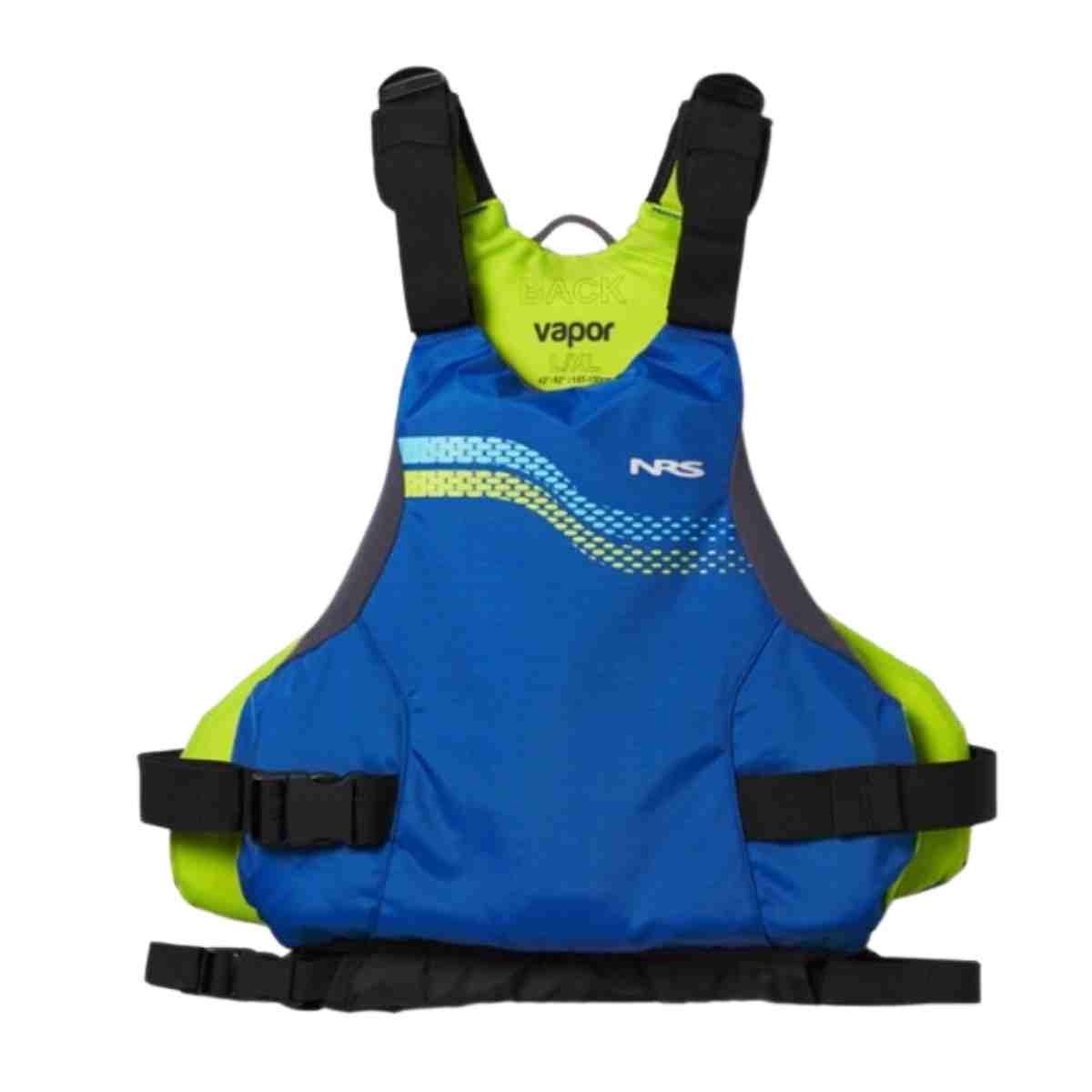
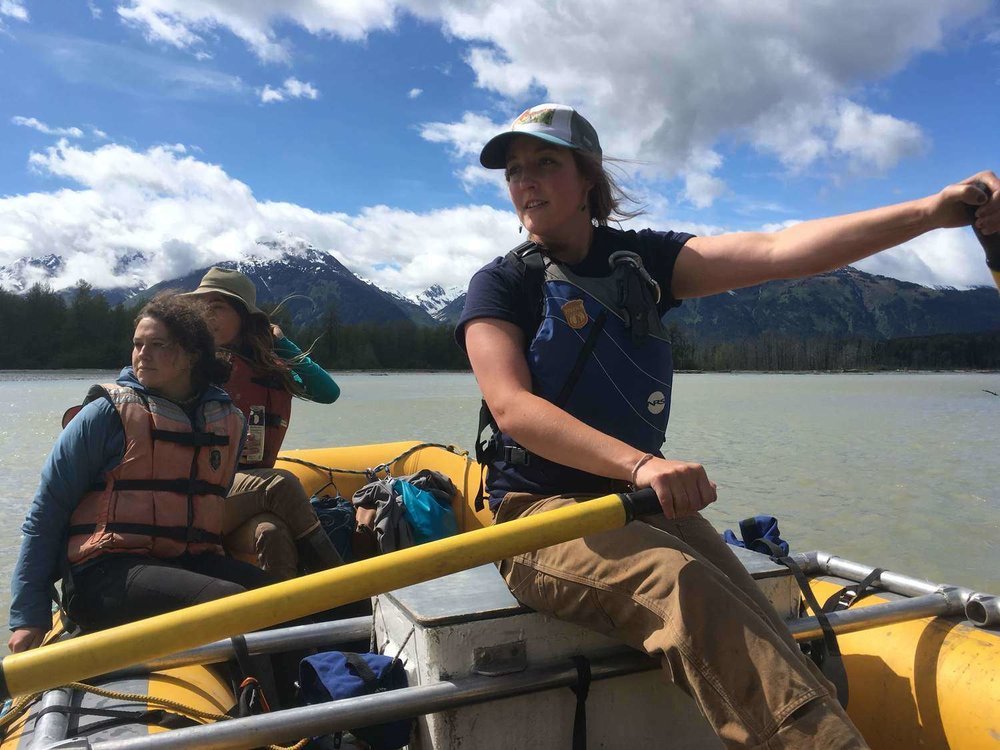


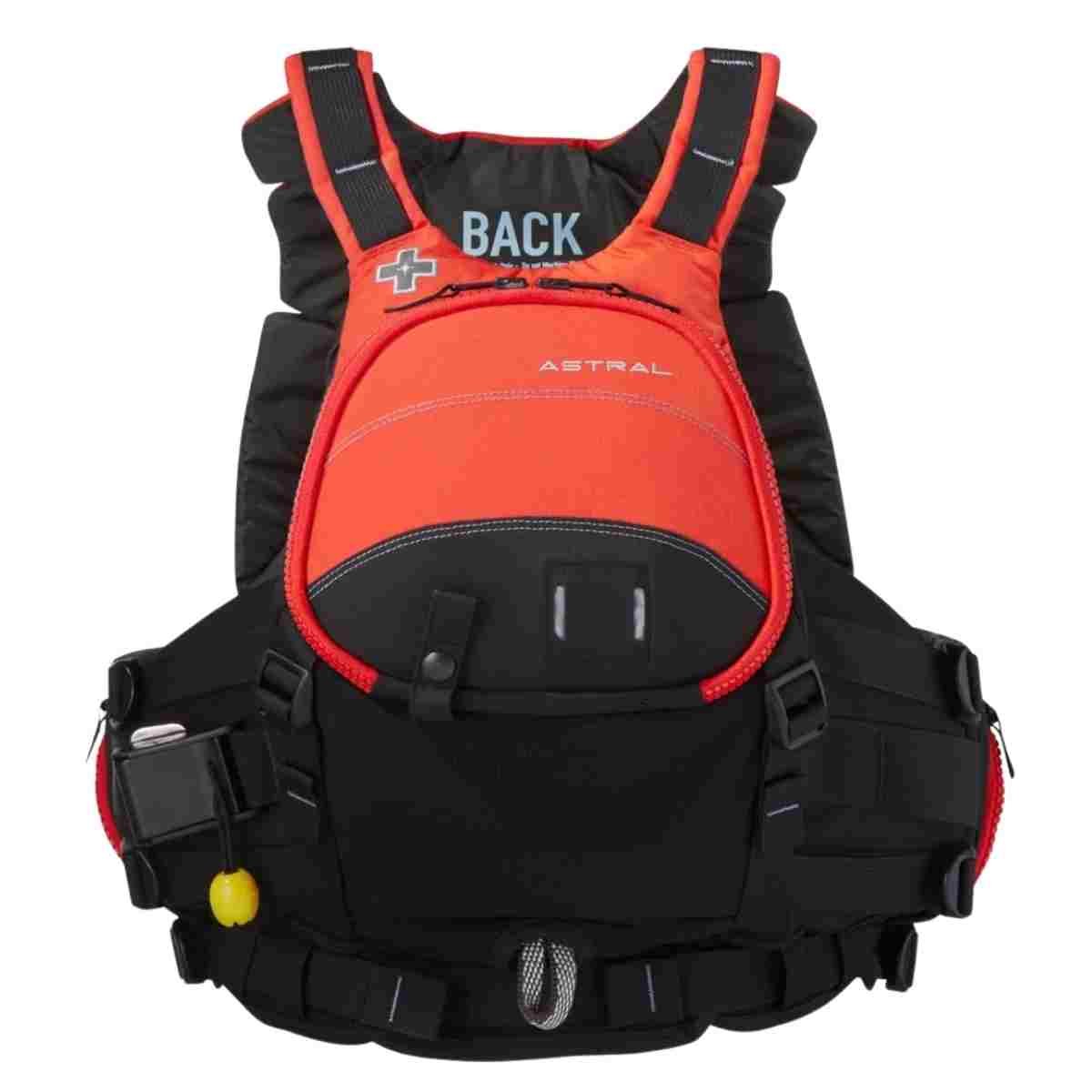

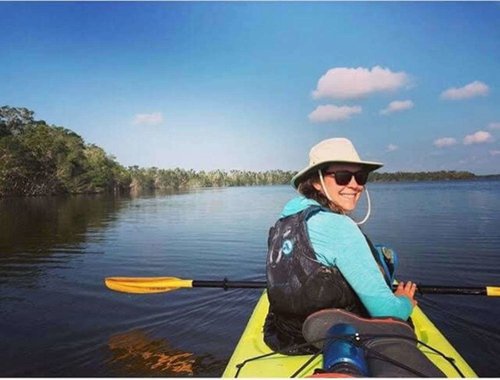


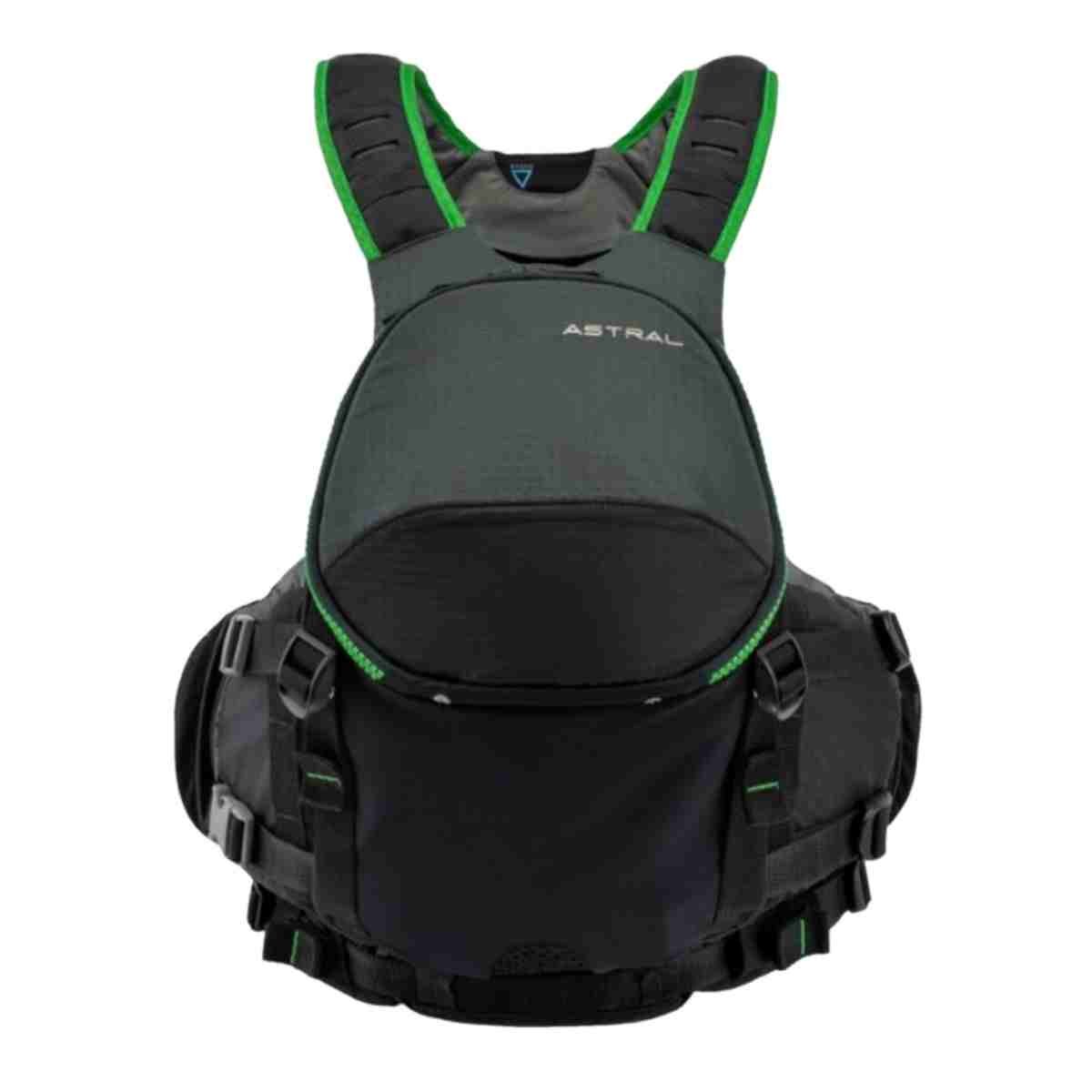
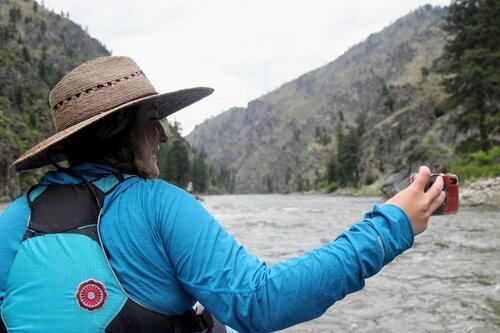


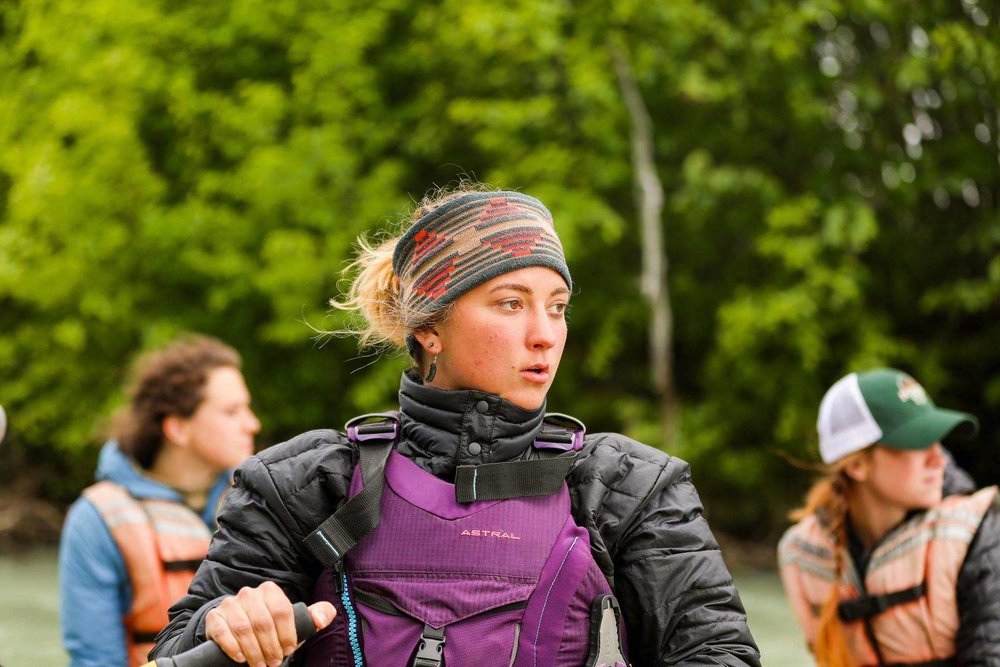
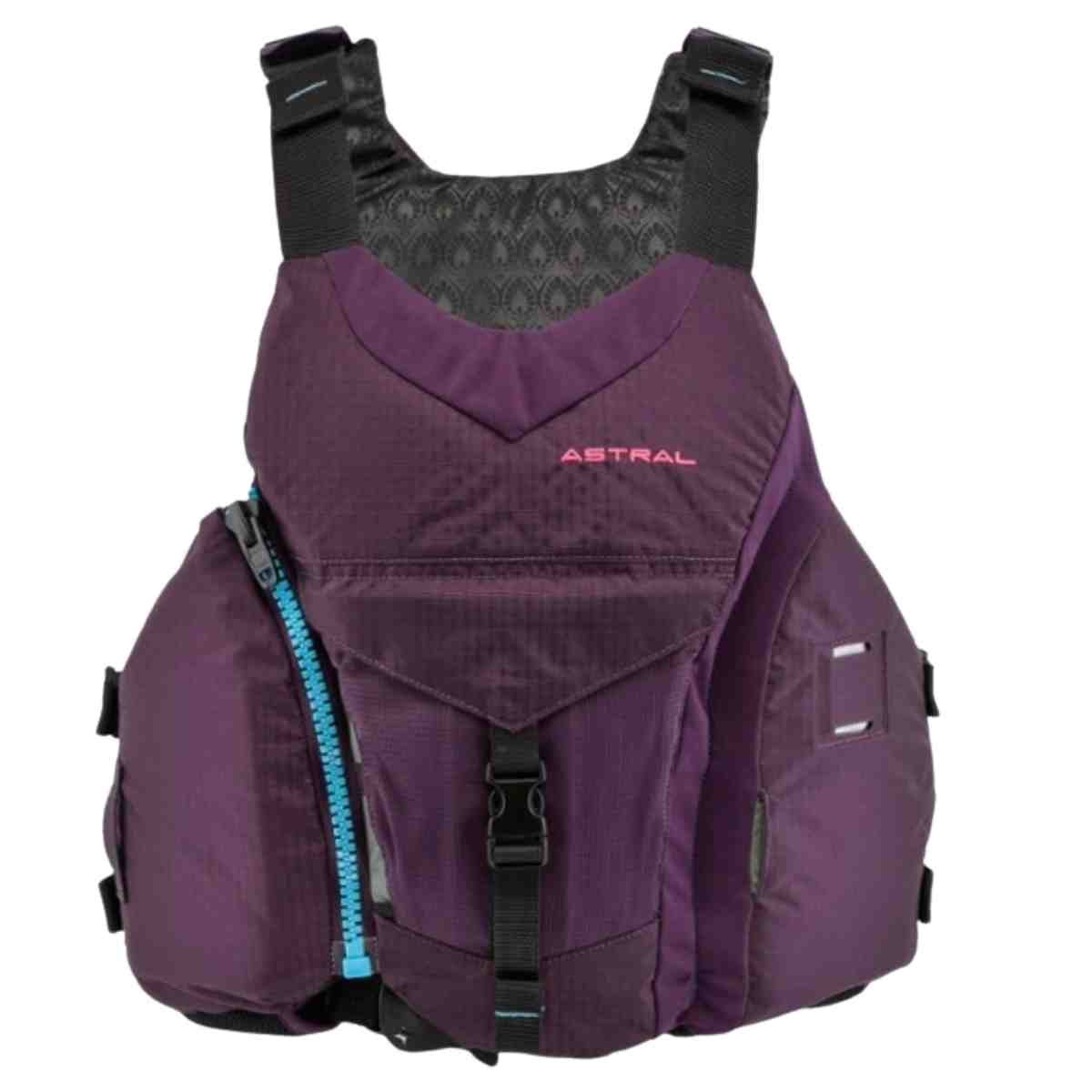
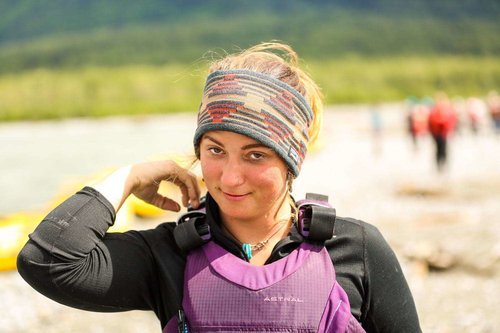
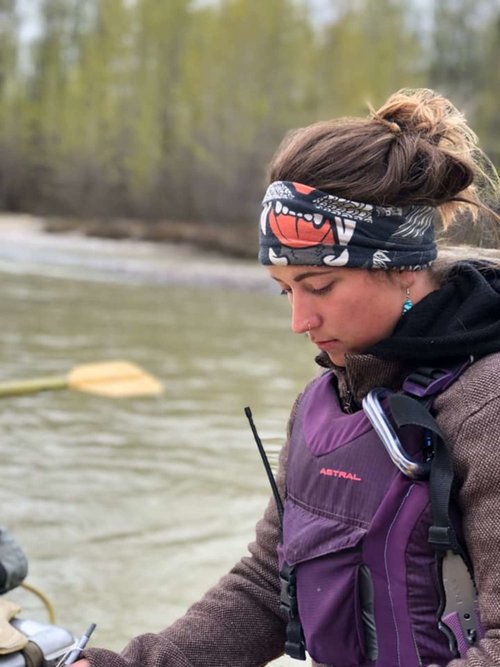
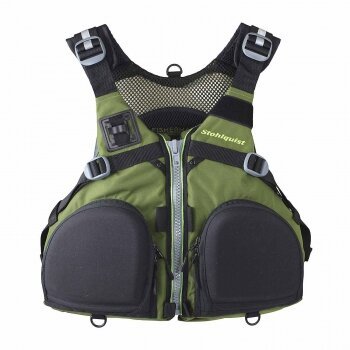

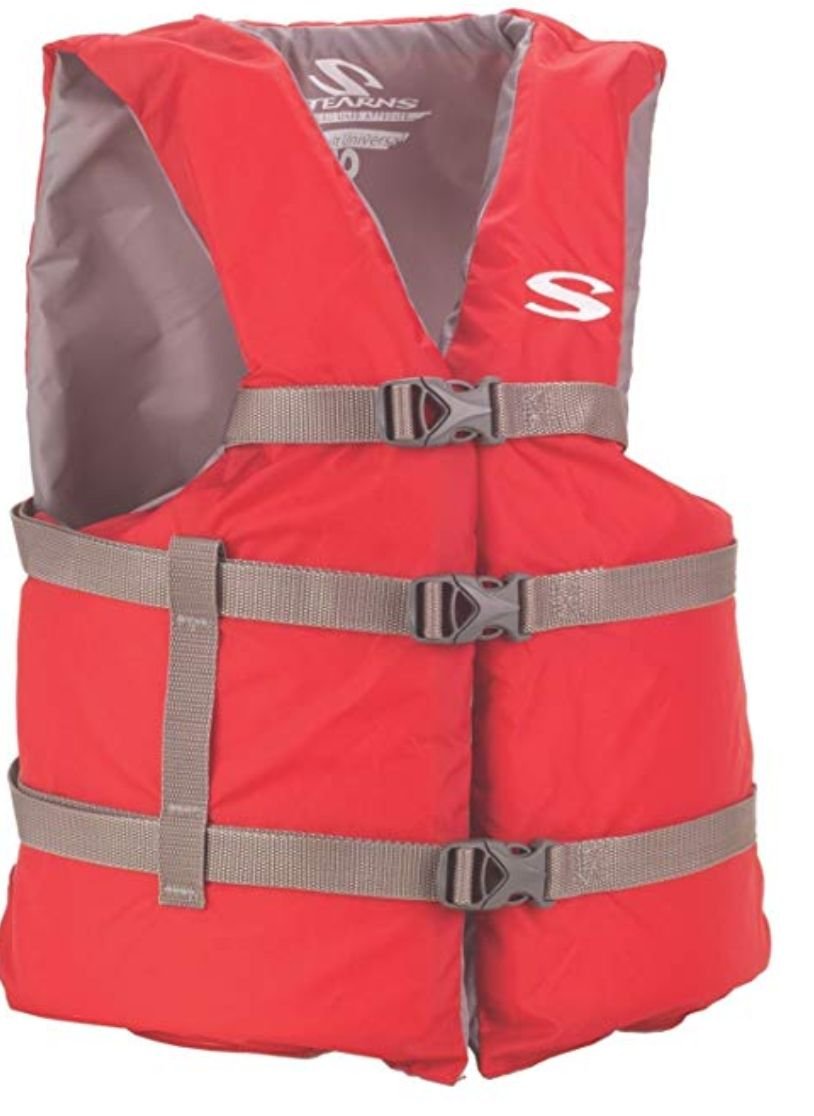
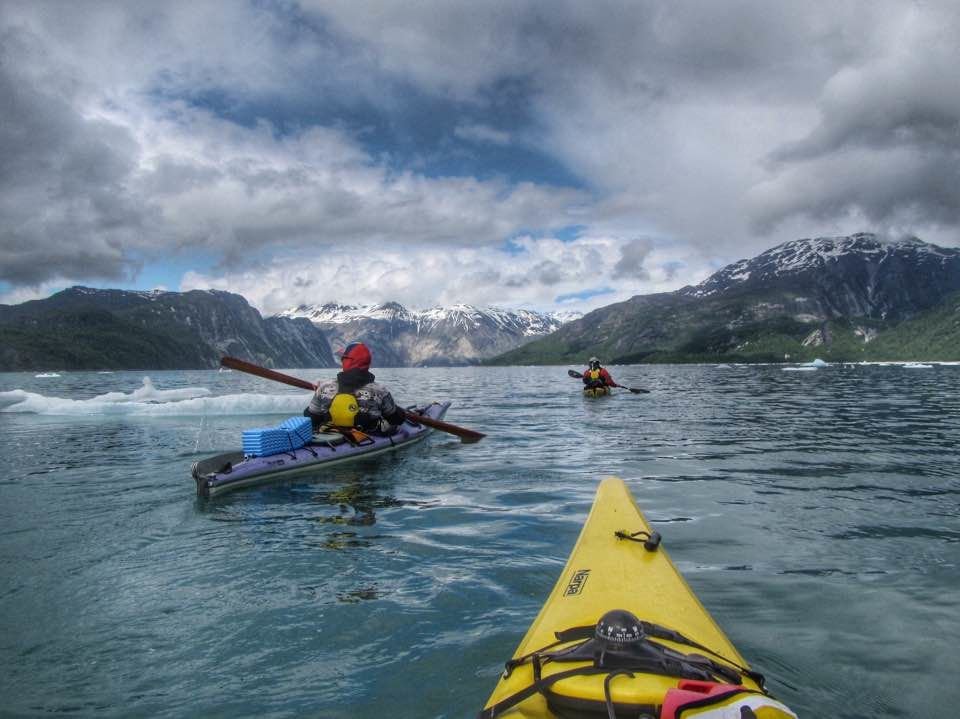




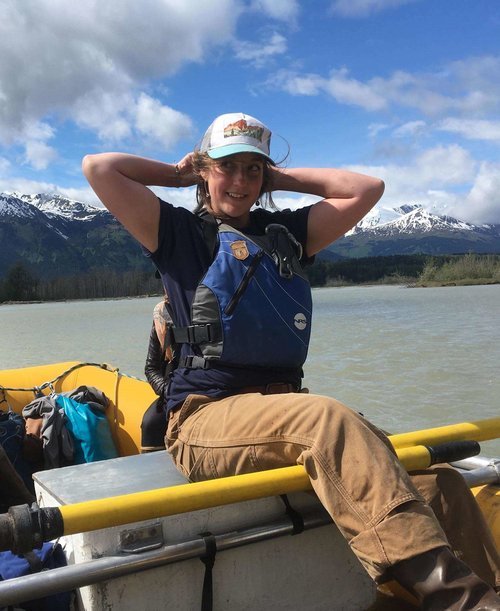

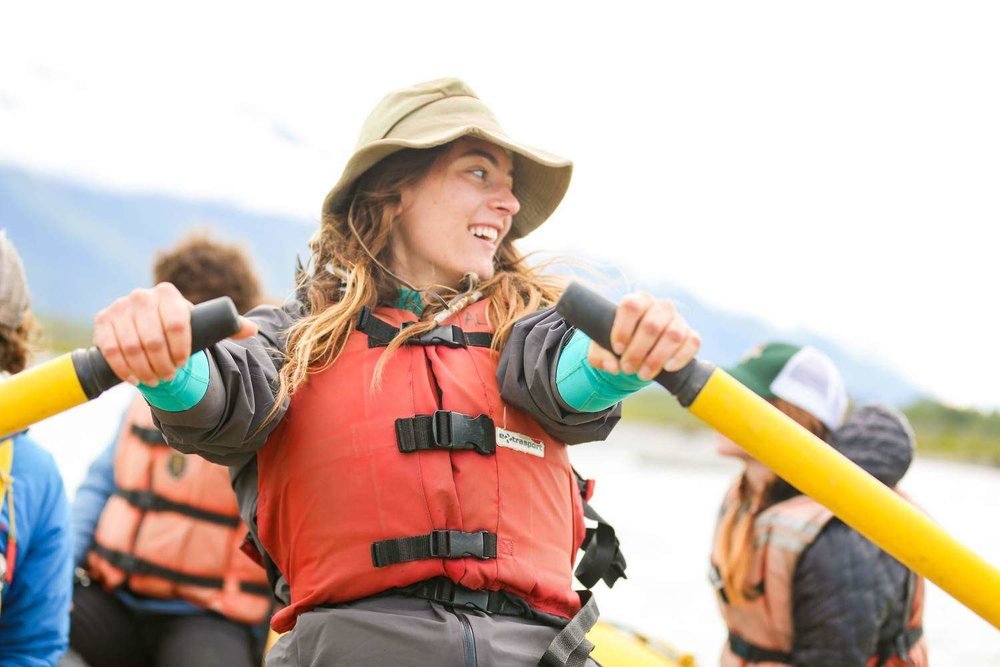


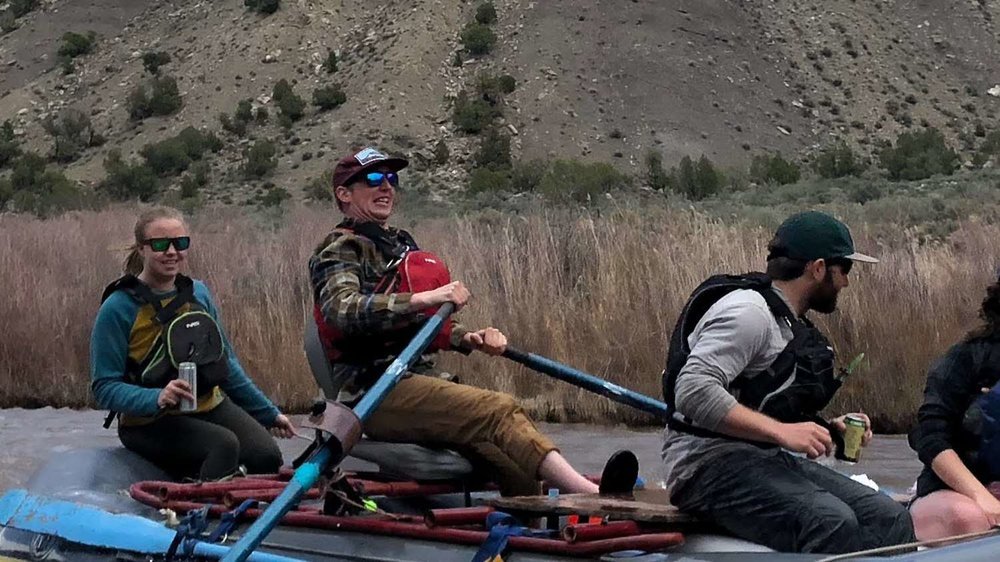



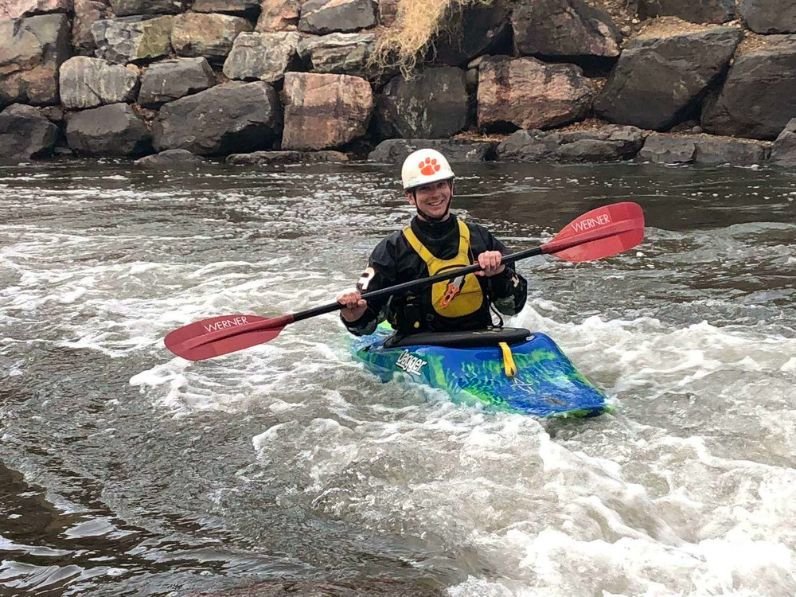
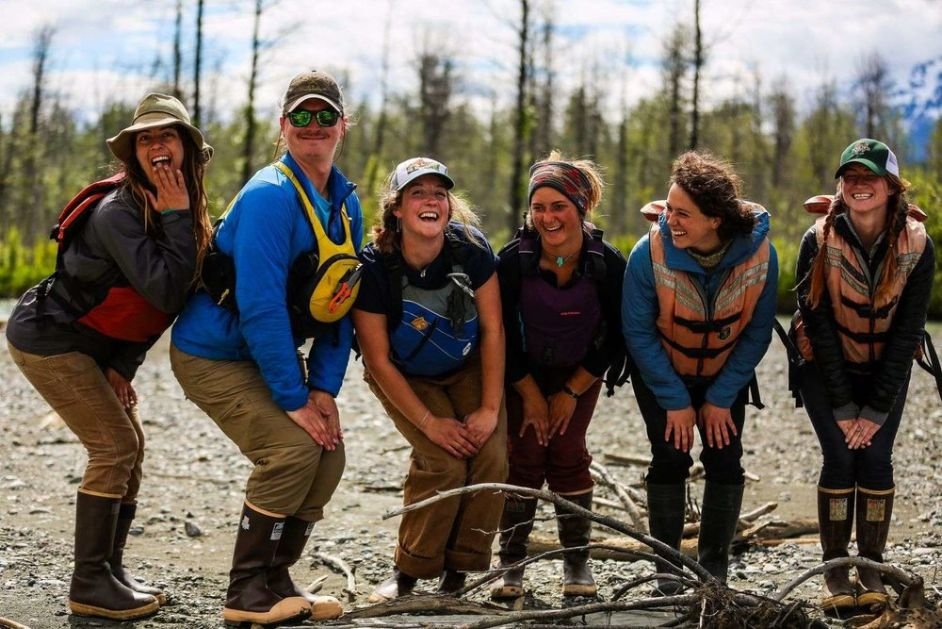






You want a high-quality boat that you can transport in the trunk of your car. Should you buy a folding Oru Kayak?